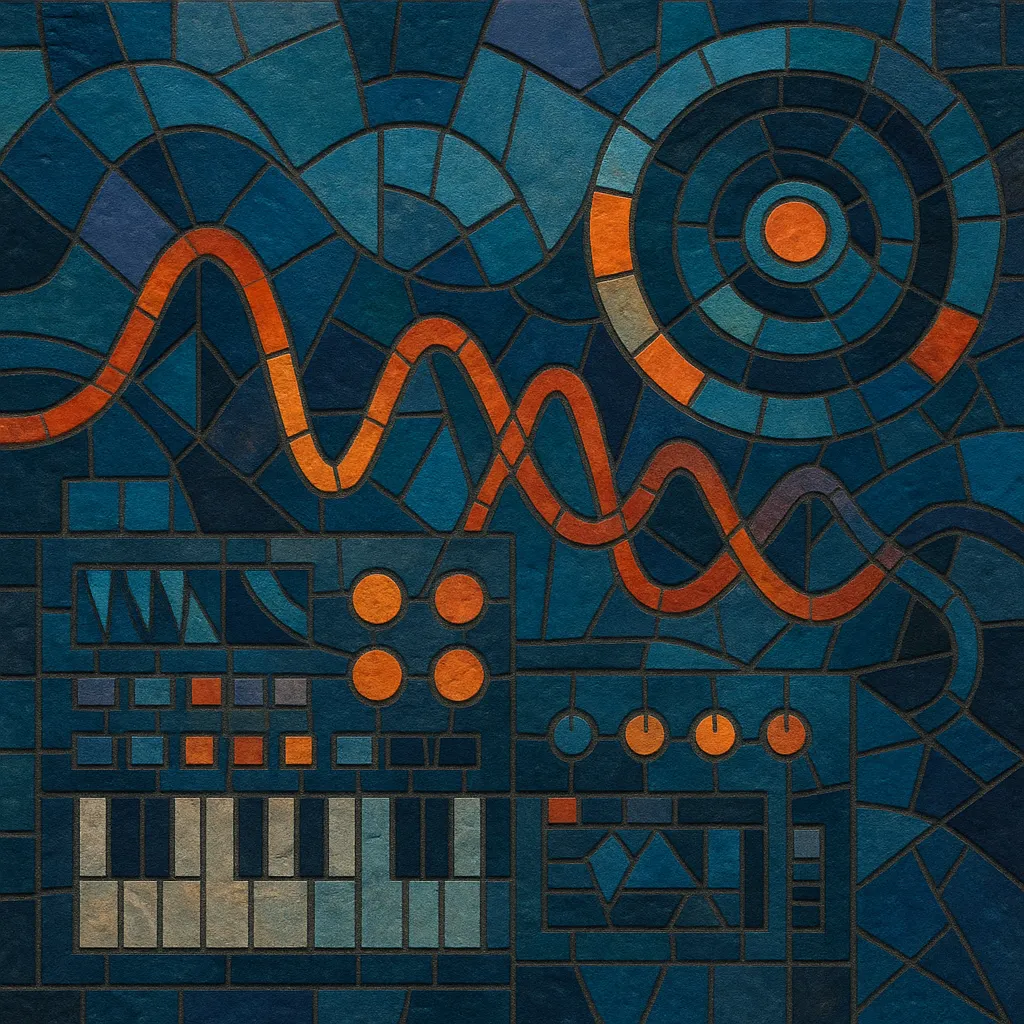Electronica is a broad, largely 1990s umbrella term for a spectrum of electronic music crafted as much for immersive, album‑oriented listening as for clubs and raves.
It gathers elements from techno, house, ambient, breakbeat, IDM, and hip hop production, emphasizing synthesizers, drum machines, samplers, and studio experimentation.
The sound can range from downtempo and atmospheric to hard‑hitting and breakbeat‑driven, but it typically foregrounds sound design, texture, and mood over strict dance‑floor utility.
In the mid‑to‑late 1990s the term was used by labels and press—especially in the United States—to market and introduce diverse electronic acts to mainstream rock and pop audiences.
Electronica emerged out of an earlier constellation of electronic styles: the machine‑funk of electro, the dance‑floor engines of house and techno, the spaciousness of ambient, and the studio experimentalism of industrial and IDM. Synth‑pop and new wave provided templates for songcraft and pop accessibility, while dub and hip hop contributed rhythmic strategies and sampling culture. The rise of raves and breakbeat culture in the UK and Europe created a receptive audience for eclectic, synth‑driven music that was not confined to a single club rhythm.
By the mid‑1990s, the term "electronica" gained currency—particularly in the United States—as a catch‑all marketing label for diverse electronic acts positioned for mainstream crossover. Major labels and media used it to frame artists from big beat, trip hop, IDM, and ambient/downtempo as album artists suitable for rock festivals, film soundtracks, and alternative radio. Landmark releases and high‑profile tours by acts such as The Prodigy, The Chemical Brothers, Underworld, Orbital, Massive Attack, and Moby helped cement the term in public consciousness.
In the 2000s, electronica’s aesthetics diffused widely. Indie scenes fused guitars with laptops (often dubbed indietronica), folk artists adopted electronic textures (folktronica), and nu jazz, chillout, and cinematic pop absorbed electronica’s sound design. While the term itself became less rigid as a genre label, it persisted as a descriptor for headphone‑friendly, studio‑crafted electronic music that values texture, atmosphere, and eclectic rhythm.
From the late 2000s onward, the rise of EDM reoriented mainstream discourse around festival‑scale dance music, yet electronica endured as an album‑centric, exploratory strand across labels and streaming platforms. Its legacy is audible in modern pop production, alternative R&B, film and game scores, and countless hybrid micro‑scenes where electronic tools, sound design, and genre fluidity are central.
Use a DAW (e.g., Ableton Live, Logic, FL Studio) with software synths, drum machines, samplers, and effects. Typical sources include analog‑style polysynths for pads, FM or wavetable synths for leads, and sample‑based kits for breakbeats and percussion.
Electronica tolerates a wide BPM spectrum (≈70–140). Combine four‑on‑the‑floor pulses with syncopated breakbeats, or lean fully into broken rhythms. Humanize with groove/swing, ghost notes, micro‑timing, and occasional polymetric layers to create forward motion without requiring a constant club kick.
Favour modal harmony and extended chords (add9, sus, 7ths) voiced across warm pads and evolving textures. Use simple, memorable motifs rather than dense counterpoint; let timbral change carry interest over time. Melodies can be fragmentary, often shaped by filters, envelopes, and automation.
Place sound design at the center: sculpt evolving pads with slow filter/LFO sweeps, design tactile basses with saturation and subtle movement, and introduce ear‑candy via granular snippets, reverse swells, vinyl crackle, and found‑sound layers. Employ creative sampling and resampling to produce unique timbres.
Build narrative through sections that breathe—introductions and codas, breakdowns, and textural bridges. Use tension/release via filter automation, reverb throws, and dynamic contrast rather than only drop‑based structures. Keep arrangements album‑friendly: gradual evolutions, thematic reprises, and cinematic arcs.
Prioritize spaciousness and clarity: high‑pass non‑basses, leave headroom, and shape depth with short rooms for drums and longer, modulated reverbs for pads. Parallel compression can add weight to drums without crushing ambience. Stereo imaging, gentle saturation, and tasteful modulation (chorus, phaser) help achieve the genre’s polished yet textural feel.
If using vocals, process them as an instrument—chops, vocoders, harmonizers, and delays. Lyrics often lean impressionistic; when present, let vocal texture integrate with the synth palette rather than dominate it.


